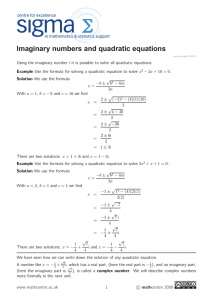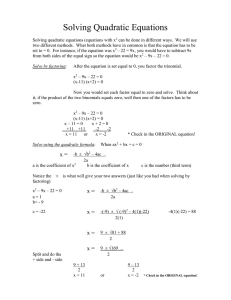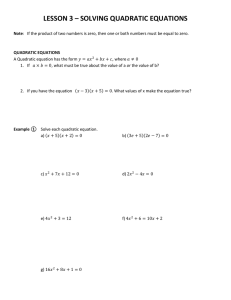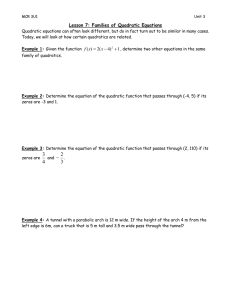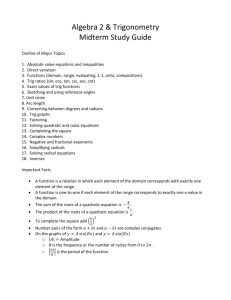GCSE Mathematics Extension Material NA 8 Solving quadratic equations
advertisement
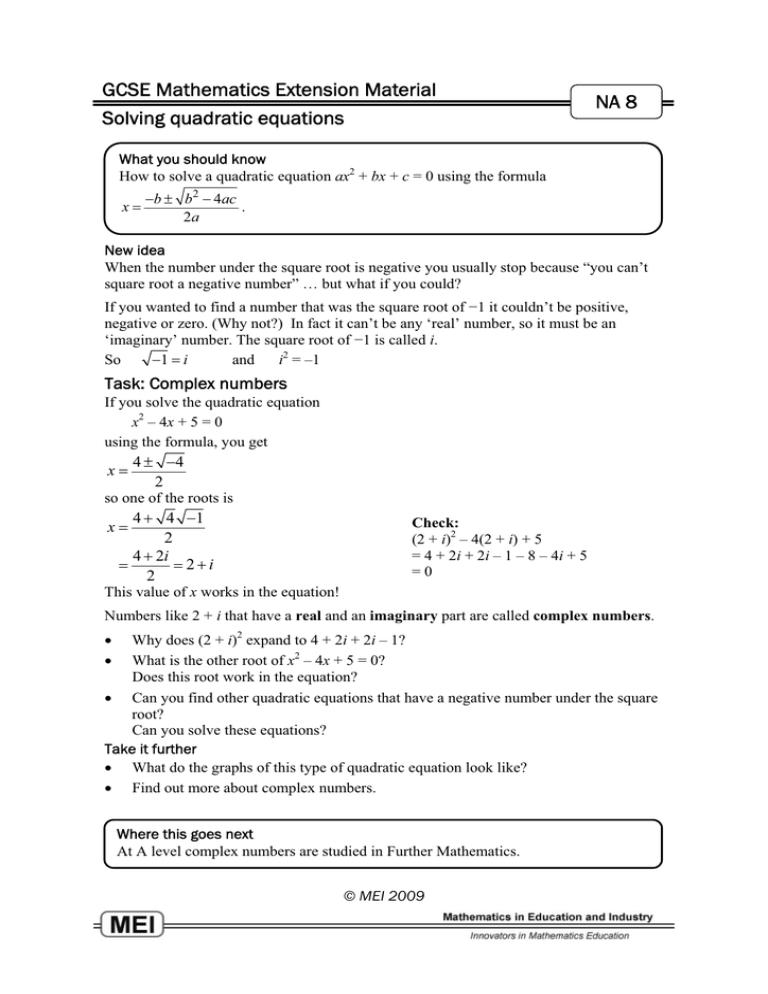
GCSE Mathematics Extension Material Solving quadratic equations NA 8 What you should know How to solve a quadratic equation ax2 + bx + c = 0 using the formula x b r b2 4ac . 2a New idea When the number under the square root is negative you usually stop because “you can’t square root a negative number” … but what if you could? If you wanted to find a number that was the square root of í1 it couldn’t be positive, negative or zero. (Why not?) In fact it can’t be any ‘real’ number, so it must be an ‘imaginary’ number. The square root of í1 is called i. 1 i So and i2 = –1 Task: Complex numbers If you solve the quadratic equation x2 – 4x + 5 = 0 using the formula, you get x 4 r 4 2 so one of the roots is x 4 4 1 2 4 2i 2i 2 Check: (2 + i)2 – 4(2 + i) + 5 = 4 + 2i + 2i – 1 – 8 – 4i + 5 =0 This value of x works in the equation! Numbers like 2 + i that have a real and an imaginary part are called complex numbers. Why does (2 + i)2 expand to 4 + 2i + 2i – 1? What is the other root of x2 – 4x + 5 = 0? Does this root work in the equation? x Can you find other quadratic equations that have a negative number under the square root? Can you solve these equations? Take it further x What do the graphs of this type of quadratic equation look like? x Find out more about complex numbers. x x Where this goes next At A level complex numbers are studied in Further Mathematics. © MEI 2009
